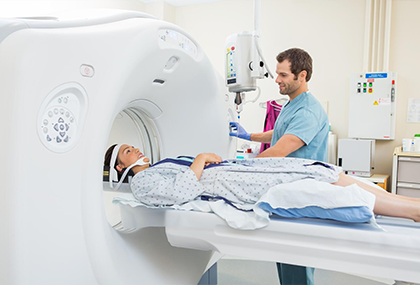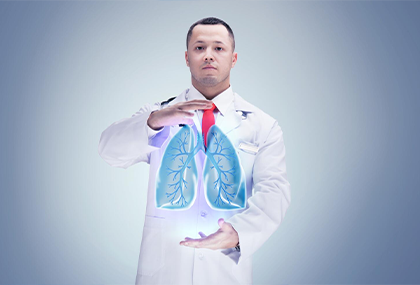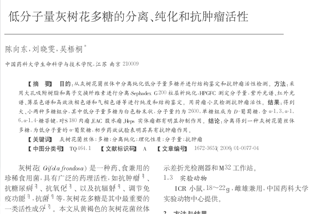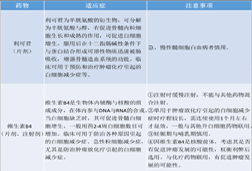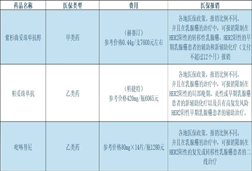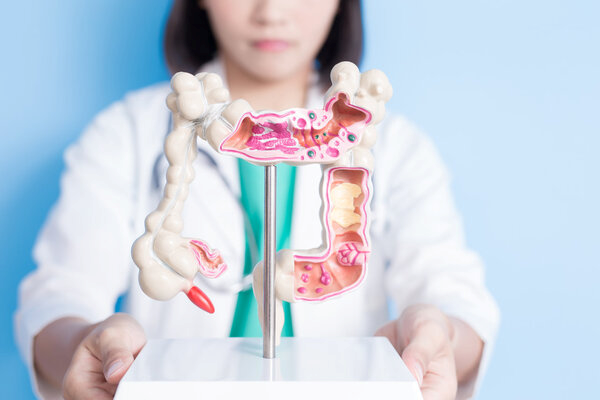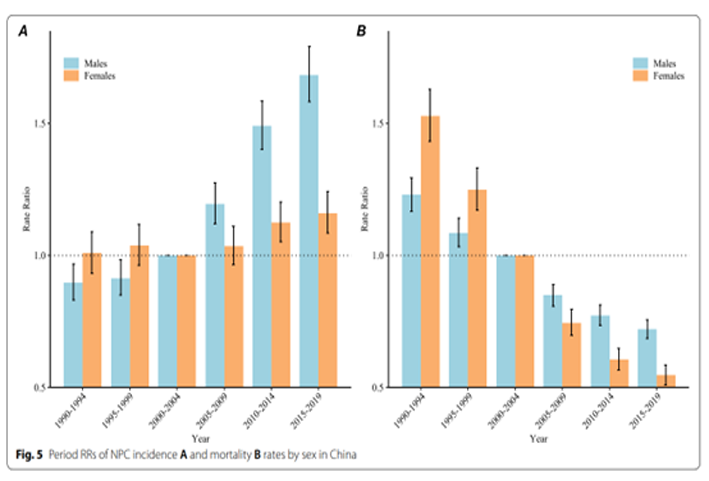Chemotherapy drugs act on the cell cycle (prophase of DNA synthesis (G1 phase), phase of DNA synthesis (S phase), phase of DNA synthesis (G2 phase), and phase of cell division (M phase)). The cell cycle of each chemotherapy drug is different. Chemotherapy drugs acting on the same cycle should not be used together as far as possible.
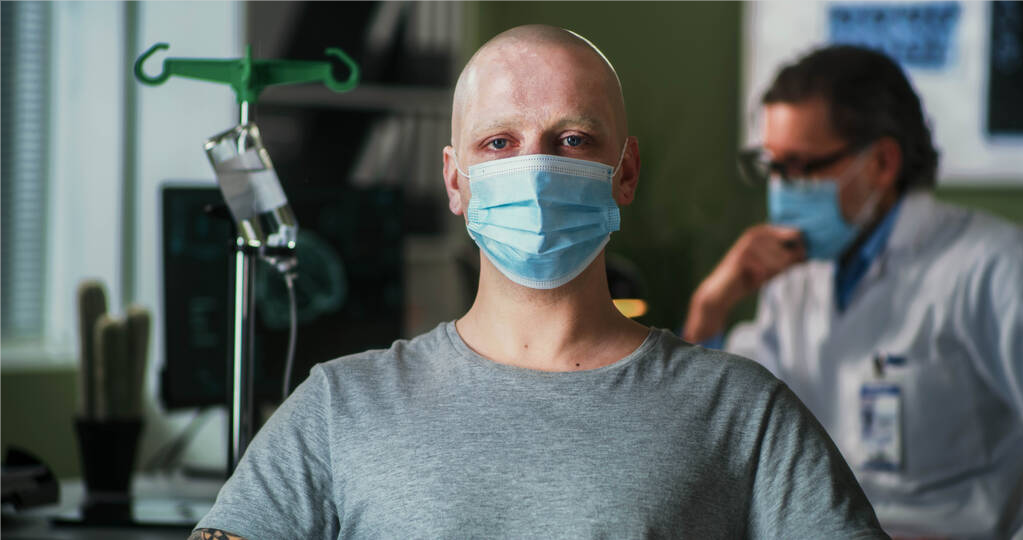
Why is the chemotherapy regimen a course of treatment every 21 days?
First of all, let's tell you how to calculate the 21st day, from the first day of injection or oral chemotherapy drugs to the 21st day. For example, the chemotherapy scheme of paclitaxel plus carboplatin was carried out on September 1, 2019, so the next chemotherapy will be on September 22, 2019. The same is true for oral chemotherapy drugs. On September 1, 2019, oral tegeol chemotherapy was carried out, so the next chemotherapy will be on September 22, 2019.
Most combination chemotherapy schemes are designed according to the time required for the recovery of bone marrow hematopoietic function after cytotoxic drugs damage bone marrow hematopoiesis. The depression of bone marrow suppression caused by chemotherapy, including leukopenia and thrombocytopenia, usually occurs on the 7th to 14th day, and then gradually recovers. Most patients can completely recover on the 21st day.
Some patients ask the doctor, "Can I have chemotherapy in advance?" Obviously not. Early chemotherapy is equivalent to increasing the dose of chemotherapy drugs and increasing the toxic and side effects of chemotherapy drugs.
If chemotherapy is not carried out on time for 21 days, will the delay affect the efficacy?
In life, there may be many reasons for the delay of chemotherapy, such as: white blood cells and platelets do not meet the standards, infection, no beds, holidays and other reasons. The chemotherapy cycle is set according to the duration of toxic and side effects of chemotherapy drugs, the recovery time of human body and the doubling time of tumor. Generally speaking, a few days delay will not have a great impact on the efficacy, but if you delay chemotherapy for many times, the efficacy will be affected.
Why do advanced tumors need long-term chemotherapy?
As we all know, chemotherapy for advanced cancer usually adopts a two drug or three drug regimen. If chemotherapy is effective, the tumor will shrink, which means that only a certain proportion of tumor cells can be eliminated in each course of treatment. If a particularly strong chemotherapy scheme is used for a long time, although it can effectively shrink the tumor, the side effects are large and the patient's body cannot tolerate it. Maintenance treatment is needed to continue killing the tumor.
Maintenance therapy is the treatment given after first-line treatment. The purpose is to kill tumor cells through continuous administration to reduce the risk of cancer recurrence, so as to achieve the goal of long-term survival with tumor. The ideal maintenance treatment drug has the characteristics of single drug effectiveness, small side effects, and convenient use.
At present, the viewpoint of maintenance therapy for patients with advanced cancer is: maintenance therapy with the same drug and maintenance therapy with dressing change.
The maintenance treatment with the same drug refers to the patients who have obtained CR (complete remission), PR (partial remission), SD (disease stability) after the initial treatment of 4-6 cycles (lung cancer) or 6-8 cycles (stomach cancer) (patients benefiting from clinical chemotherapy). Treat with at least one drug that was used in the initial treatment.
Dressing change maintenance treatment refers to the use of new drugs for maintenance treatment after a certain period of initial treatment if there is no disease progress.
03 How to deal with adverse reactions of chemotherapy?
1. Digestive system reaction
Nausea, vomiting and loss of appetite: Cisplatin and anthracycline drugs are relatively heavy, mainly because the drug causes the release of 5-hydroxytryptamine (5-HT) and other substances, acts on the cerebral cortex and the fourth ventricle chemosensory area, and activates the medullary vomiting center to cause vomiting. The current guidelines also suggest that patients should routinely use antiemetic drugs to prevent vomiting during chemotherapy. If vomiting still occurs after prophylaxis, some more powerful antiemetics should be used in a timely manner. Some patients will have serious reactions, so antiemetic drugs with different antiemetic mechanisms should be used in combination. With regular treatment, most patients can achieve no obvious nausea and vomiting.
Diarrhea and constipation: some drugs, such as yew and vinorelbine, have a certain proportion of intestinal symptoms. If diarrhea or constipation occurs, most of them are mild, and can be improved by symptomatic support.
Oral mucositis: Mucosal tissue proliferates rapidly, so it is also vulnerable to damage by chemotherapy drugs. The main manifestations are pain in oral mucosa, and some ulcers can occur, which are common in methotrexate and fluorouracil drugs. For patients with oral mucositis, gargle (to prevent bacterial and fungal infections), rinse lidocaine solution before eating to relieve pain, give vitamin B2 and other vitamins, and give intravenous nutrition support if necessary.
For the reaction of digestive system, in addition to taking medicine according to the doctor's advice, the following points can also be noted daily:
1) Pay attention to eating light and digestible food, pay attention to high nutrition and vitamins, and do not eat spicy, fried, high-fat, salty, sweet, cold, overheated or strong smelling food, alcohol and caffeinated drinks. Increase the proportion of vegetables, fruits, cereals and legumes in an appropriate amount. You can also eat more porridge or medicated porridge at ordinary times. Consult a professional nutritionist for specific food choices. Pay attention to eat less and eat more. When the stomach is obviously full, reduce the amount of food in each meal.
2) It is very necessary to replenish water. Develop a good habit of drinking more water. Drink 6-8 cups of water every day to ensure that the body has enough water to moisten the intestines and stool. However, it is not recommended to drink a lot of water quickly. You can drink water (soup) regularly every day. Drink as little water as possible before and after eating. Eat solid and liquid food separately. Do not lie down immediately after eating.
3) When nausea occurs, it tastes delicious, including hard sugar, mint sugar or lemon tea, or eating sour fruits.
4) Although you are weak after chemotherapy, don't rush to take tonic. You can wait until the second week and the third week after chemotherapy to take tonic, and it is also more conducive to digestion and absorption.
2 Alopecia
Hair loss is actually a common problem during chemotherapy, but doctors pay little attention to it. For most patients, especially women, hair loss is a very unacceptable adverse reaction. First, people pay more attention to their appearance than before; Second, the hair loss caused by chemotherapy may be a very obvious reminder of the fact that patients and people around them are receiving chemotherapy.
These reasons may cause patients to have resistance to chemotherapy, and even some patients may refuse treatment, depression and other situations.
Therefore, hair loss may not be the most dangerous side effect in cancer treatment, but timely intervention of chemotherapy induced hair loss is also increasingly urgent.
Our human scalp has about 100000 hairs, while normal people lose 100 to 150 hairs every day. New hair will grow to make up for lost hair. However, when patients receive chemotherapy, the rate of hair regeneration cannot keep up with that.
Generally speaking, there are two ways for patients to lose their hair after receiving chemotherapy: one is that the hair gradually becomes thinner when the maximum dose of chemotherapy is applied, and then breaks from the middle. The other is that the hair root is seriously suppressed and falls directly from the root.
Hair loss is not just hair, eyebrows, eyelashes, pubic hair will fall off in varying degrees. Some people lose all their hair quickly within one to three weeks after chemotherapy, while some people lose their hair slowly, lasting for a long time.
The hair loss caused by different drugs is also different. For example:
Cyclophosphamide will cause hair to become thinner, but will not fall off completely
Fluorouracil will not cause hair loss
Adriamycin will cause hair to become thinner in the first 3 weeks, and then fall off overnight
Taxol can cause hair loss overnight
There are also some chemotherapy drugs that will not cause hair loss, but will cause the hair color to become lighter or thicker. For example:
Cisplatin and cyclophosphamide may cause grey or white hair
Methotrexate can cause hair color to thicken. Light hair, such as blonde hair, may have a streak of dark color and a streak of light color, which is called the Star Spangled Banner sign.
Although the hair loss after chemotherapy looks terrible and disturbing, the lost hair will grow back when chemotherapy stops or even after chemotherapy.
Usually, a few weeks after chemotherapy, most people's hair will gradually grow back to its original shape. Just maybe the hair will become different. Some people's hair has become thinner, some people's hair has become thicker, and others have found that their hair has become curly.
After six months to one year, most of the hair will return to the same condition as before.
For hair loss, so far, no drug has been proven to slow or reverse the hair loss caused by chemotherapy, and clinicians have not yet been able to prevent hair loss 100%.
At present, there are two commonly used methods. One is to wear a pressure headband before chemotherapy to exert a certain pressure on scalp vessels to reduce blood flow; The other is to cool the scalp and reduce blood flow, both aiming to reduce the concentration of chemotherapy drugs received by the scalp as much as possible.
However, the effects of these two methods vary from person to person and are not ideal. Therefore, it is a pity to say that there is no good way to prevent hair loss for the time being.
Perhaps it is the best way for patients to make adequate psychological preparation before starting chemotherapy.
Generally, before chemotherapy, doctors will fully communicate with patients and do a good job in psychological construction, which will help cancer patients or their families to prepare emotionally and psychologically.
In order to prevent the appearance problems caused by chemotherapy hair loss, patients can also buy a wig that is close to their own hair color in advance, or a wig that is bold and trendy, just as a new hairstyle.
In a word, don't worry too much about "hair loss". Maintaining a good mood is very helpful to defeat the cancer devil.
3 Local stimulation
Many chemotherapy drugs have local stimulation on blood vessels, which may cause pain in the infusion area, and may cause phlebitis. If they accidentally leak out of the blood vessels during infusion, they may also cause local tissue necrosis.
Therefore, when using such drugs, large vessels should be selected for infusion. If conditions permit, subclavian vein puncture or central venous catheter (PICC) placed through peripheral vein can be used for administration.
Once leaking out of the blood vessel, try to extract the leaking liquid, and apply cold compress, seal, and give antidote. These drugs mainly include nitrogen mustard, doxorubicin, vinorelbine, vinorelbine, vincristine, etc.
For patients, they should follow the doctor's advice and not move at will during the infusion. In addition, when you know that there may be local stimulation during drug infusion, you should not be too nervous or worried. Please fully trust the professionalism of the medical staff who serve you.
4 Skin toxicity
The main clinical manifestations are: skin pigmentation, rash and hand foot syndrome. These reactions affect the appearance, most of which are reversible, and gradually recover after drug withdrawal.
Adriamycin, fluorouracil, capecitabine, tegeol, bleomycin, cyclophosphamide, dacarbazine, etc. are easy to cause pigmentation and dermatitis. Among them, capecitabine and tegeol can cause systemic skin pigmentation. In addition to fluorouracil can cause systemic skin pigmentation, extravascular skin pigmentation is significantly deepened or erythema can be seen.
At present, the method of intravenous infusion of fluorouracil through peripheral small vessels has been eliminated. Instead, the method of continuous infusion with infusion pump through central vein cannulation (subclavian vein puncture or PICC) can improve the efficacy of fluorouracil and reduce the toxicity.
Cyclophosphamide and bleomycin can cause nail bed pigmentation and nail deformation.
In general, if there is slight skin change or dermatitis (local erythema, edema, hyperkeratosis), no pain, and no impact on daily life, there is no need to worry too much. Keep the affected skin dry and avoid scratching.
If there are obvious skin changes (exfoliation, blisters, bleeding, swelling, hyperkeratosis), pain, affecting daily life and activities. Local drugs such as oral B vitamins and celecoxib can be considered, and anti-inflammatory or anti infective drugs can also be combined when necessary. The choice of specific drugs should still follow the doctor's advice and not blindly use drugs.
5 Allergic reaction
A few drugs can cause immediate allergic reaction, so they are routinely given pretreatment, such as routine hormone prophylaxis before and after treatment with docetaxel and paclitaxel to prevent allergic reaction.
For cancer patients, before chemotherapy, in order to prevent skin allergy, before using anti-cancer drugs with high incidence and severity of allergic reactions, necessary skin allergy tests will be conducted to prevent skin allergy symptoms.
In case of skin allergy, the patient must not scratch and scratch, but must deal with it in a timely manner. First, pay attention to the skin cleaning to prevent infection, or let the doctor recommend some effective drugs, and deal with it strictly according to the doctor's instructions to prevent accidents. Hylamine or hydrocortisone are commonly used, but it is still necessary to watch closely for reactions, report any new situation to the doctor in time, and inform the doctor in time of serious allergic reactions, such as hypotension, bronchospasm, laryngospasm, etc.
6 Bone marrow suppression
Most antineoplastic drugs have bone marrow suppression to varying degrees, mainly manifested as: leucocyte and granulocyte decline, red blood cell and hemoglobin decline and platelet decline.
Leukocyte and granulocyte decline: the most common. The half-life of granulocytes is the shortest, about 6-8 hours, so it decreases first, and the lowest value generally occurs in 7-13 days of chemotherapy. The therapeutic effect of leukopenia and granulocytopenia is very good, mainly with granulocyte colony stimulating factor. Protective isolation, room detoxification and prophylactic use of antibiotics are also required when the degree of IV is reduced. The application of these measures can safely protect patients from bone marrow depression after chemotherapy.
Decrease of red blood cells and hemoglobin: it can occur after multi cycle chemotherapy, generally with slight decrease. If necessary, erythropoietin or red blood cell suspension can be used to ensure the smooth progress of treatment.
Thrombocytopenia: It is rare. Some drugs have adverse adverse reactions to thrombocytopenia. Slight thrombocytopenia does not need to be treated. In severe cases, measures such as platelet colony stimulating factor and platelet transfusion can be taken. Patients with thrombocytopenia below IV degree need to be properly braked.
Some studies suggest that the more metastatic organs, the more times of chemotherapy, and the more severe the bone marrow suppression of previous chemotherapy, the more likely the occurrence of degree IV bone marrow suppression.
For the high-risk population with IV degree myelosuppression, individualized prevention and treatment measures can improve the quality of life and survival period of patients.
7 Neurotoxicity
Anti tumor drugs can cause damage to peripheral and central nerves, and peripheral nerve damage is more common, and the representative drugs are vinblastine, paclitaxel, oxaliplatin, etc.
The main clinical manifestations include finger (toe) numbness, paresthesia, disappearance of tendon reflex, constipation, paralytic intestinal obstruction, etc. Generally, it can be gradually recovered after drug withdrawal. The doctor will also recommend supplementing neuroprotective drugs such as vitamin B1 and B12 to promote recovery.
For patients, in addition to following the doctor's advice and taking medicine on time, we can take the following measures to alleviate the related symptoms.
Finger (toe) numbness and paresthesia
Most peripheral neurotoxic chemotherapy drugs mainly damage the sensory nerves. When numbness occurs in the lower limbs, abnormal foot perception of the ground may occur. If tingling occurs in the lower limbs, walking will be significantly affected and the pain will be aggravated.
In addition, some peripheral neurotoxic anti-tumor drugs can cause muscle weakness or muscle spasm. When you stand up, climb stairs, or step on your feet, you will lose strength. In severe cases, you will walk unsteadily, and there will be a risk of falling.
If there is an adverse reaction of numbness at the finger (toe) end, don't panic. Usually, you can try to wear comfortable shoes, and the trousers should not be too long to avoid tripping; Walk slowly as much as possible, and pay attention to the ground to prevent falling due to wet and uneven ground; Ensure sufficient light in the room and stairwell, leave night lights at night, turn on the lights when going to the toilet, and suggest installing handrails on the bathroom wall to prevent falls; If there is obvious gait instability, you must be accompanied by your family when going to the toilet or going out to avoid accidents; In addition, you can actively seek physical therapy, balance and gait training.
Fine motor disorder
When the symptoms of peripheral neurotoxicity are serious to a certain extent, it can cause fine motor disorders, such as buttons, toothpicks or fine needles, writing, shoelaces, bottle caps, telephone dialing, etc. Choose shoes without shoelaces, ask others to help you open the bottle cap, choose pens that are easy to grasp, choose clothes without buttons, and the family will actively help you.
The most important thing is the family's care for the patient. From a healthy state of freedom of movement to a situation where even simple things can not be done well in daily life, the patient suffers from both physical and psychological blows. At this time, the family's encouragement and support are very needed.
8 Substantial organ injury
Hepatotoxicity
Many antineoplastic drugs metabolized in the liver, such as cyclophosphamide, doxorubicin, carmustine, methotrexate, etc., can cause liver damage to varying degrees, with clinical manifestations of elevated serum glutamic pyruvate, glutamic oxaloacetic transaminase, or serum bilirubin. During the chemotherapy period, liver protecting drugs can be routinely used for prevention or treatment. Usually, traditional Chinese and western medicine can be used to protect the liver, which can reduce the damage of chemotherapy drugs to the liver. If it is very serious, chemotherapy should be stopped.
Nephrotoxicity
Clinical manifestations: Mild damage may be clinically asymptomatic, but it may be manifested as creatinine elevation, mild proteinuria, and microscopic hematuria; In severe cases, renal failure may occur.
Nephrotoxicity is mainly prevented.
The nephrotoxicity of most chemotherapy drugs is not obvious, and cisplatin and methotrexate are relatively common. Before using such drugs, doctors will know whether the patient has chronic complications such as hypertension and diabetes, and evaluate the renal function. For high-risk groups, we will also try to avoid the use of drugs that damage the kidneys.
When using cisplatin, methotrexate, nitrosoureas and other drugs that may cause renal function damage, routine hydration, diuresis (which can reduce the damage of drugs to the kidney) and 24-hour urine volume will be calculated to reduce the impact of drugs on the kidney. At the same time, the patient will be asked to recheck urine routine regularly to monitor whether various indicators are normal.
cardiotoxicity
The use of anthracycline drugs such as doxorubicin and daunorubicin can cause cardiac toxicity, which is manifested by arrhythmia, ECG changes, heart failure, etc.
Therefore, patients with organic heart disease or anthracycline drugs used for many times in the past should be cautious. Patients who may cause heart damage can be monitored by ECG, take coenzyme Q10, or use other drugs to protect the heart muscle. The use of doxorubicin should be avoided when the total dose is greater than 500 mg/m2 of body surface area.
Pulmonary toxicity
Rarely seen, it is characterized by pulmonary interstitial fibrosis and dyspnea.
Such drugs are represented by bleomycin, pingyangmycin and nitrosoureas, which generally occur after the drug has accumulated to a certain dose. It should be used with caution for patients with poor pulmonary function or who have received pulmonary radiotherapy.
Source link:
https://www.cn-healthcare.com/articlewm/20211220/content-1297551.html



